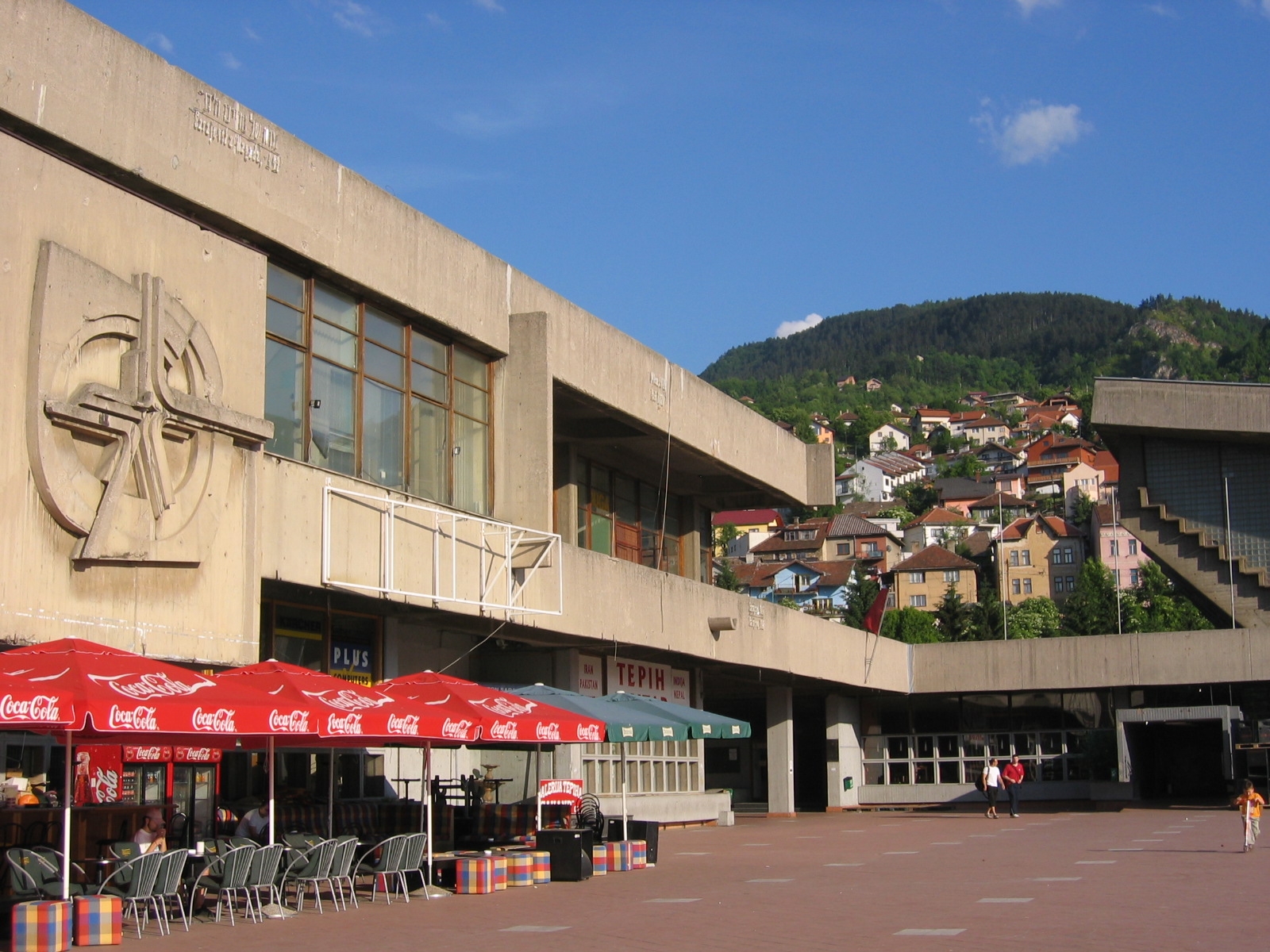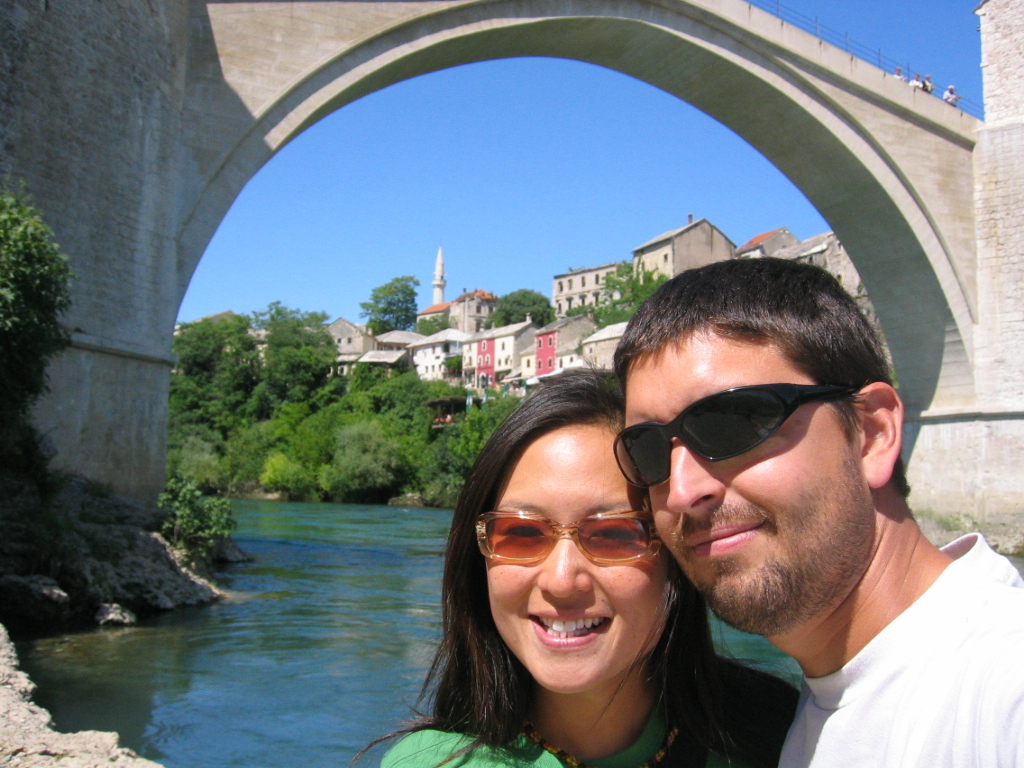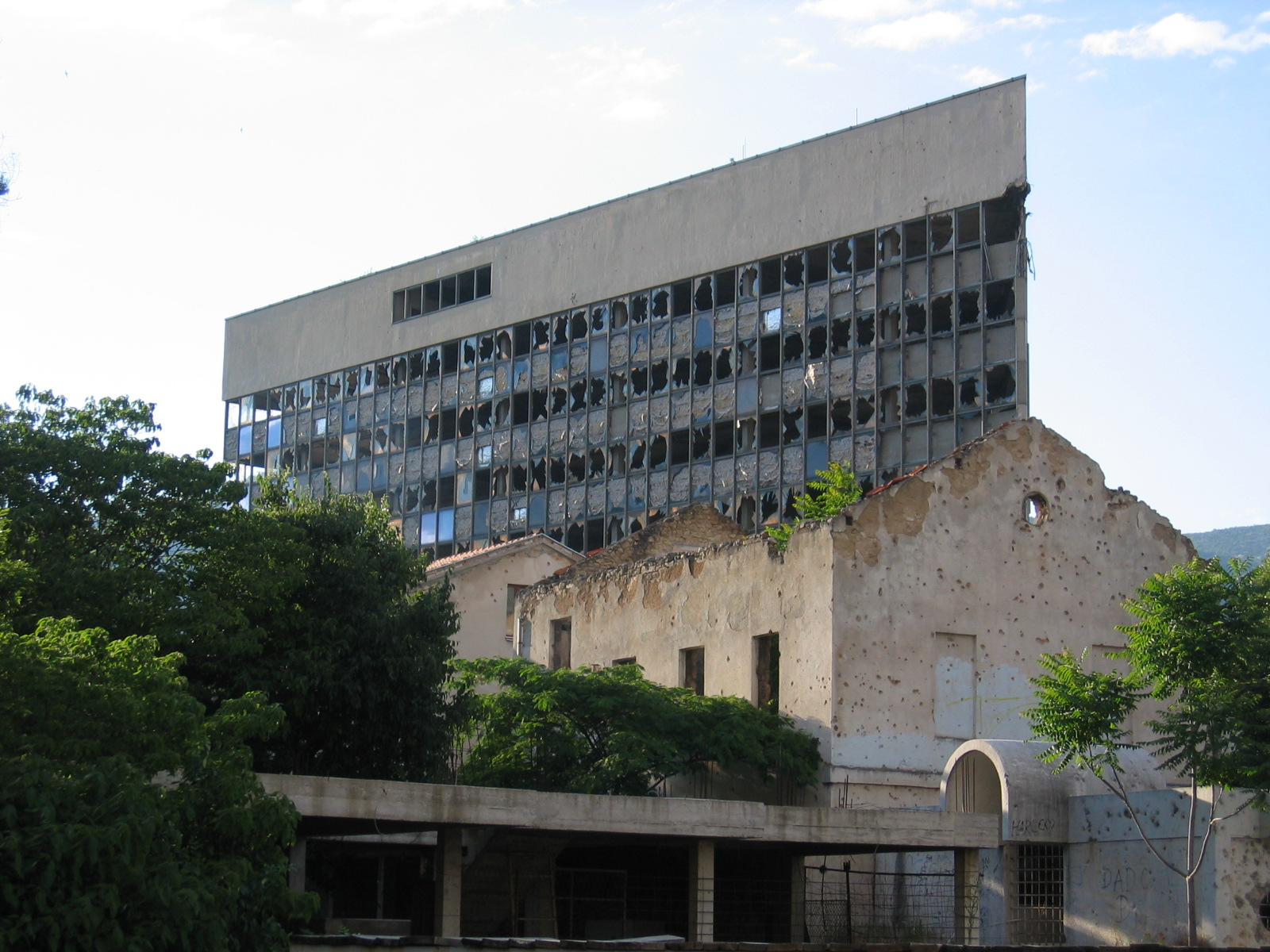Sarajevo and Mostar – beauty and the reminders of war


Another one of our unexpected surprises on this trip, we didn’t decide to visit Sarajevo and Mostar until an American friend convinced us while we were in Turkey. Lucky for us he did as both cities were full of natural and architectual beauty as well as riveting reminders of a brutal war just a few years ago.
If you ever get the chance to take 2 overnight bus rides in a row, don’t. Our 2nd overnight bus ride in a row, this time from Sofia to Nis, Serbia, was probably the worst we’ve had as the seats were cramped and barely reclined. And the people on the bus and at our brief layover in Nis were grumpy and unfriendly with sour looks on their faces all the time – maybe this is the way you feel after your country (formerly Yugoslavia, now Serbia & Montenegro) spends so much time and energy fighting with the many people who want to break away and no longer be associated with you. I guess.
Upon arriving in Sarajevo very early in the morning, we were approached by a friendly man who spoke some English and offered us a decent priced room in his apartment near the city center and a free taxi ride from the bus station to his apartment. If we didn’t like the room we could leave and at least get a free taxi ride into the city so why not? This may sound strange to you but it’s quite common in this part of the world for people to earn extra money this way and it seemed unlikely the guy was a serial killer so we took a chance and went for it and it turned out to be one of the best things that happened to us this whole trip.
Our host “Bob” (short for Slobodan) turned out to be a journalist who had lived in Sarajevo all his life until the war started in the 90’s when he left as a refugee to live in Belgrade. The UN refugee mug in his bathroom was the only proof I needed to believe his story. He gave us some maps of the area and told us the best places to eat delicious and very hearty cevapci and borek, sights to see, and some brief accounts of his experience during the war. We didn’t probe too much further as it seemed a sensitive topic, so we set off to explore the city.

I’ve never been to Switzerland but Sarajevo is what I would imagine cities there to look like, kind of. The city is completely surrounded by large beautiful mountains and has an easy and debonair way about it… except for the brutal signs of war that still remain everywhere. Many buildings large and small throughout the city have all sorts of bullet and bomb holes of all shapes and sizes that stare you right in the face everywhere you go. A few buildings are completely bombed out with no signs of repair or rebuilding taking place anytime soon. As easy as it would be to just walk around Sarajevo and be completely bewildered by the scars of war, there is so much more to see. We walked through buildings leftover from the 1984 Winter Olympics, strolled along a small nice river in the center, checked out handmade crafts and jewelery in the old market area, and saw the spot where Archduke Ferdinand was assassinated in 1914 which led to….well hopefully you know the rest of that story.
The next day Bob offered to take us out past the airport to the Sarajevo Tunnel Museum where you can still walk through part of the half-mile underground tunnel hand-dug by Bosnian government forces and volunteers over 4 months in 1993. The tunnel extended from the edge of the constantly under fire city under the airport to what was safe government-held territory. At the peak of its use, 4,000 people crept through the tunnel each day to let wounded people get out to a safe area and bring in food, weapons, and ammunition. The exhibits and the experience were shocking. It’s impossible to imagine how a great city that had recently hosted an Olympics was reduced to this just a few years ago. We were so fortunate to have Bob with us as we may never have found the museum and more importantly he was very happy to share more about his experiences with us. Being a journalist, he was a treasure chest full of information about the war and how the country and region have been trying to get back on their feet ever since. And being a Serb, he shared a sometimes different view than the views we heard and read about from Bosniaks about the war and the time after thus giving us a more complete picture of all sides of the story.
Bob was a wonderful host and we were truly sad to say goodbye. He asked that we share his email address with anyone who wants an affordable place to stay in Sarajevo, we highly recommend staying with him! dima_basovic@yahoo.com


From Sarajevo we took a bus to Mostar, the unofficial capital of Herzegovina, named after its famous and incredibly gorgeous “Stari most” (Old Bridge). The original bridge and much of the city was destroyed or damaged during the war and like Sarajevo there are visible scars everywhere. Fortunately the Old Bridge was completely rebuilt and the locals say you can barely tell that anything on the bridge is different. Even like in the old days, young men still periodically dive off the high bridge into the icy river water and we got to witness one of these dives. Back then young men would do it to impress young women they hoped to marry; now they do it to impress tourists they hope to get some tips from. The only tip I gave was to not wear such a tiny speedo next time, yuck.
There wasn’t much else to see or do in Mostar other than enjoy some good meals along the river and stroll around rustic shops, but it was a nice and relaxing small town and well worth spending a night there.
For pictures from Sarajevo and Mostar:
http://www.flickr.com/photos/shanlovesphotos/sets/72157594158885719/
http://www.flickr.com/photos/shanlovesphotos/sets/72157594158889774/
– Anthony
Tags: Bosnia-Herzegovina, Europe, Mostar, Sarajevo, Travel
